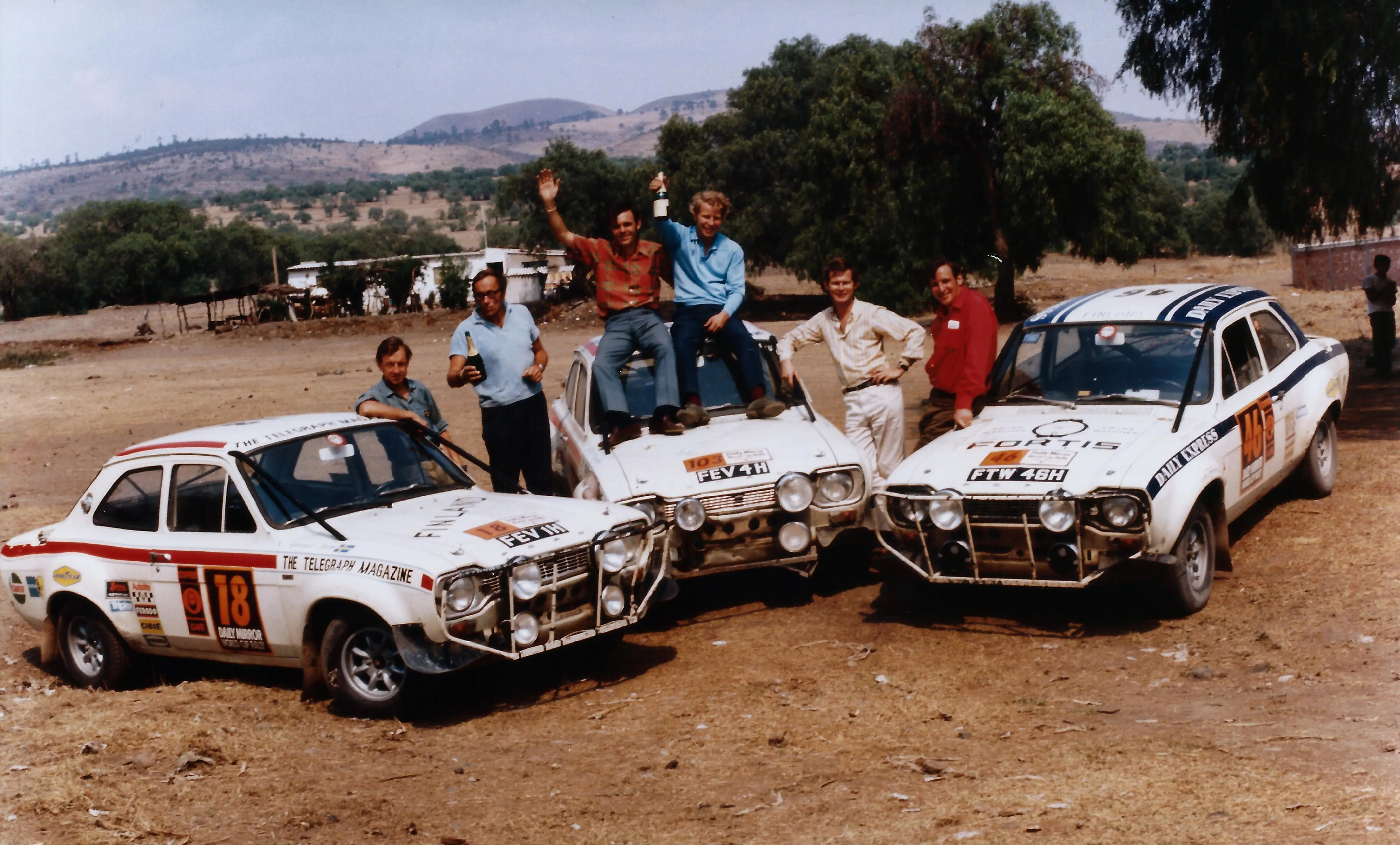The World Cup Escort’s legacy is still felt on classic rally stages today
08 March 2023
‘Win on Sunday, sell on Monday’ – an apt phrase for the Ford Motor Company and none more so, in Europe at least, for the Escort. The Blue Oval’s small car contender was rallied from day one of its public career, picking up where the career of the Cortina MkII had left off.
Two years into its life, an Escort Mk1 crossed the line of the gruelling 16,000-mile World Cup Rally in first place. The result was not an accident and created the most popular clubman rally car of all time: the Ford Escort Mexico.
Ford of America understood the value of motorsport in the showroom – the now-legendary phrase equating podium finishes with sales was coined by one of its dealers, Bob Tasca of Tasca Ford in Providence, Rhode Island. Over there, Tasca’s rhetoric justified the development of high-performance models after victories on the drag strip.
Here, Ford quickly realised the value of rallying and the halo effect it had on otherwise unremarkable models. Imbuing the Escort with pedigree meant that the man in the street would be enthralled with his 1100L, setting him for the day when he could drive a Twin Cam, RS1600 or Mexico out of the showroom. Ford’s model hierarchy took customers up the ranks as its drivers won stage after stage, they were victories everyone witnessed – and ones they could easily buy into.
The Escort Mk1 was destined for stardom when it was realised that the Lotus Twin Cam would fit under its bonnet. While it wasn’t the engine that took Hannu Mikkola and Gunnar Palm to victory – that was down to the longevity of the seminal Kent, enlarged to 1850cc – it did bring the Escort Mk1 its first win on the rough stuff, thanks to Roger Clark and Jim Porter on the 1968 Circuit of Ireland.
Endurance rallying had also been gaining in prominence since the London to Sydney Marathon the same year; the Twin Cam didn’t go the distance, and public relations stakes were higher than ever for the World Cup Rally, so named to span the miles between the hosts of the 1966 FIFA World Cup – London – and the 1970 venue, Mexico. Hammering the point home, England football legend, Jimmy Greaves was among the roster of drivers.
Ford invested massively in making sure the Escort triumphed, putting seven cars on the starting line at Wembley Stadium. To get it there, the works Competition Department in Boreham, Essex, developed the car even further, resulting in parts and modifications still fitted to rallying Escorts in 2023.
Knowing full well that the cars were in for a 16,000-mile, all terrain battering, the Boreham competition department started with a so-called ‘Type 49’ bodyshell, built for export markets with rough roads. They had extra gussets and bracing; previous rally requirements had already necessitated the wide ‘bubble’ arches for which rallying Escorts became infamous. These housed wider tracks, stronger ‘Atlas’ axles, four-wheel disc brakes and fatter wheel and tyre combinations.
Ground clearance on rough roads was always a concern, creating a now-legendary modification known as the 'World Cup crossmember’, which helped raise the steering rack out of harm’s way. This in turn brought a stronger pedal box and engine mounts into play; almost every seriously competitive Escort Mk1 in historic rallying has benefitted from these modifications.

Although gas/oil Bilstein dampers were fitted all-round, previous experience on stages revealed that the rear shock towers were prone to breaking, owing to the angle at which they were fitted into the shell. Overloading caused problems on the rally itself; while testing with Roger Clark created a temporary alloy brace that helped the shock towers stay in place, later developments with lessons learned from the World Cup Rally placed said towers almost upright, making them far more resilient.
Of the 96 cars which lined up at Wembley Stadium, just 23 made it to the finish line. The Escorts were among the smallest cars in contention, but – rear shock towers aside – were the most reliable.
Conditions were savage: 4900m passes in the Andes had to be tackled, prompting the use of oxygen bottles for the drivers.
Individual stages spanned four-figures distances, for which the Kent engine was ideal; while the peaky, screaming Twin Cam and nascent Cosworth BDA 16-valve engines produced more power, the 140bhp Kent had greater longevity, and would carry on running when the former units failed.
With 9 hours and 7 minutes of penalties, Escort number 18, registered FEV 1H, brought home the bacon. Hannu Mikkola and Gunnar Palm had beaten everyone, crossing the line 1 hour and 18 minutes ahead of Brian Culcheth and Johnstone Syer’s Triumph 2.5 PI.
It wasn’t quite the 1-2-3 victory that the GT40s had enjoyed at Le Mans in 1966, but the Escort Mk1 had more than proven itself, with only two retirements. Rauno Aaltonen and Henry Lidden placed third, with Timo Mäkinen and Gilbert Staepelaere managing fifth and Jimmy Greaves and Tony Fall in sixth. A fifth Escort Mk1 with European Rally Champions Sobieslaw Zasada and Marek Wachowski took 8th.
FEV 1H now resides in Ford of Britain’s heritage department; a replica, ‘H1 FEV’, was built in 1993 to take on the 25th anniversary of the World Cup Rally but was crashed at the Goodwood Festival of Speed in 2009. Zasada and Wachowski’s Escort was sold at the same event’s auction by Bonhams, where it fetched £71,900.
The win galvanised Ford’s Rally Sport department; while the RS1600 remained out of reach of many, the single-overhead cam Mexico (advertised with the strapline: ‘We brought it back from…’) could also be turned into a rally car from a catalogue. Specifications on offer included International Rally Car, Club Rally Car or Hi-Series (‘Fast Road’) Streetcar.
Then, as now, the Escort Mk1 rally car continues to evolve in the wake of a seminal competition career.
